Acoma Crape Myrtle Tree (Lagerstroemia Acoma) Profile
Written by Iris
Dec 15 2021
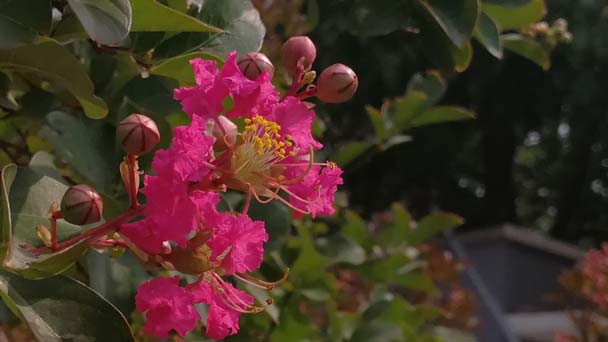
From early summer to late summer, Acoma Crape Myrtle (Lagerstroemia Acoma) is covered in stunning white frilly flower panicles at the ends of branches. Acoma Crape Myrtle has attractive dark green leaves that appear copper-colored in the spring. The oval leaves of Acoma Crape Myrtle are very ornamental, but do not form any noticeable fall color.
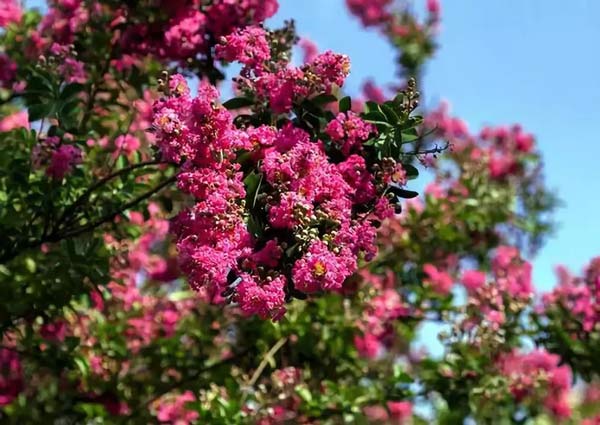
Read More:
How to Grow & Care for Acoma Crape Myrtle Tree
How to Propagate Acoma Crape Myrtle from Cuttings
In the 1950's, John Creech (of the US National Arboretum) undertook an expedition to Japan looking for interesting new plants, and he sent back seeds from the Japanese crepe myrtle, Lagerstroemia fauriei. 5 of these seedlings were planted at the North Carolina State University, on the site where their arboretum now stands. One of those seedlings exhibited an attractive upright form with interesting bark that exfoliates to reveal a smooth trunk mottled with orange, white and brown colors. This selection was later named 'Fantasy' and is still available in the trade.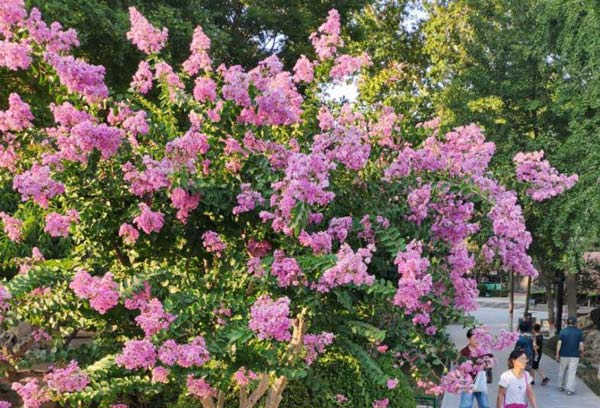
Lagerstroemia indica: the more ‘traditional' varieties.
Lagerstroemia fauriei increasingly popular species, generally only white flowering in species form.
Lagerstroemia fauriei x indica and Lagerstroemia indica x L. fauriei: newer hybrids in a range of colours.
You'll also find varieties named more generally, such as Lagerstroemia “'Midnight Magic”.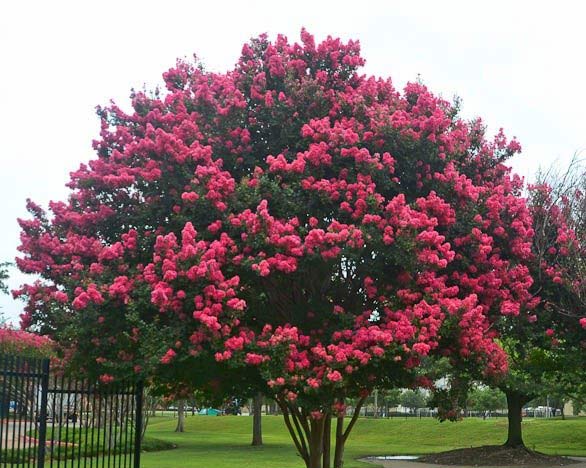
Spraying a large crape myrtle can be difficult, so systemic drenches are often the recommendation treatment. I'm not a fan of these types of products for curing infestations, but they seem to do a tolerable job as preventatives where the problems have been known to exist in the past. For a bad infestation on a large specimen, you may want to have a professional handle the job.
Depending on the type of crape myrtle shrub you plant, you can grow small flowering trees, colorful hedges, or use them to beautify mixed beds. Dwarf crape myrtle bushes are also ideal for growing in containers. You can place potted crape myrtle plants on balconies, patios, or deck areas to add greenery and color.
Here some popular ways to grow crape myrtles in gardens.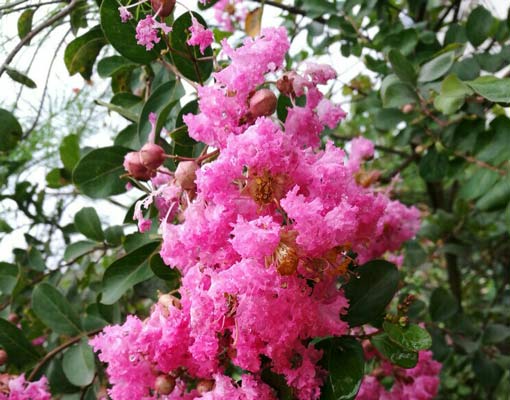
Acoma Crape Myrtle PictureAcoma Crape Myrtle InfoHabits of Acoma Crape MyrtleAcoma Crape Myrtle HistoryUses of Acoma Crape MyrtleVarieties of Acoma Crape MyrtleAcoma Crape Myrtle Common Pests/DiseasesAcoma Crape Myrtle Design TipsAcoma Crape Myrtle Companion Plants
Acoma Crape Myrtle Picture

Acoma Crape Myrtle Info
| Botanical Name | Lagerstroemia x ‘Acoma’ |
| Common Name | Acoma crape myrtle |
| Plant Type | Tree |
| Mature Size | 2 to 10 feet tall and 2 to 10 feet wide |
| Sun Exposure | Full sun |
| Soil Type | Well-draining |
| Soil pH | Slightly acidic to neutral |
| Bloom Time | Spring, summer |
Habits of Acoma Crape Myrtle
Acoma crape myrtle trees (Lagerstroemia indica x fauriei ‘Acoma’) are hybrid trees with a semi-dwarf, semi-pendulous habit. acoma crape myrtle are filled with slightly drooping, snowy, showy flowers all summer long. These Acoma Crape Myrtle trees put on an attractive autumn display at the end of the summer. The foliage turns purple before it falls. Acoma Crape Myrtle only grows to about 9.5 feet (2.9 m.) tall and 11 feet (3.3 m.) wide. The trees usually have multiple trunks. This is why the trees can be wider than they are tall.Read More:
How to Grow & Care for Acoma Crape Myrtle Tree
How to Propagate Acoma Crape Myrtle from Cuttings
Acoma Crape Myrtle History
Acoma Crepe Myrtle was introduced into the United States around the time of its founding. It was quickly propagated and grown throughout the south. The only species grown in the US was Lagerstroemia indica, which blooms for a long time but is quite susceptible to powdery mildew. For over 200 years this shrub has been bred and improved cultivars released.In the 1950's, John Creech (of the US National Arboretum) undertook an expedition to Japan looking for interesting new plants, and he sent back seeds from the Japanese crepe myrtle, Lagerstroemia fauriei. 5 of these seedlings were planted at the North Carolina State University, on the site where their arboretum now stands. One of those seedlings exhibited an attractive upright form with interesting bark that exfoliates to reveal a smooth trunk mottled with orange, white and brown colors. This selection was later named 'Fantasy' and is still available in the trade.

Uses of Acoma Crape Myrtle
Grow Acoma crape myrtles as specimen and accents, narrow trees for fast shade, allée along streets or driveways, screens, or stately groups underplanted with groundcovers, bulbs, or small shrubs. Small varieties grow well in large containers mixed with other smaller plants.Varieties of Acoma Crape Myrtle
Not too long ago the main type of crepe myrtles grown were Lagerstroemia indica varieties. Today there are a couple of different species and a multitude of crosses and hybrids. Realistically, this doesn't make an enormous amount of difference, as when you shop for a crepe myrtle chances are your main concerns will be flower colour and size. Nonetheless, it always helps to have a bit of an understanding about the names you may encounter.Lagerstroemia indica: the more ‘traditional' varieties.
Lagerstroemia fauriei increasingly popular species, generally only white flowering in species form.
Lagerstroemia fauriei x indica and Lagerstroemia indica x L. fauriei: newer hybrids in a range of colours.
You'll also find varieties named more generally, such as Lagerstroemia “'Midnight Magic”.

Acoma Crape Myrtle Common Pests/Diseases
The major problems with crape myrtle include Japanese beetle, aphids, whitefly and powdery mildew. Again, providing a good location and proper sizing to fit the site will minimize most of these problems, but monitor for them and treat as needed.Spraying a large crape myrtle can be difficult, so systemic drenches are often the recommendation treatment. I'm not a fan of these types of products for curing infestations, but they seem to do a tolerable job as preventatives where the problems have been known to exist in the past. For a bad infestation on a large specimen, you may want to have a professional handle the job.
Acoma Crape Myrtle Design Tips
Growing Acoma crape myrtle trees and shrubs in your garden is the perfect way to add beauty and color to landscapes. The long-blooming time of crape myrtle trees means you can enjoy their showy flowers for many months.Depending on the type of crape myrtle shrub you plant, you can grow small flowering trees, colorful hedges, or use them to beautify mixed beds. Dwarf crape myrtle bushes are also ideal for growing in containers. You can place potted crape myrtle plants on balconies, patios, or deck areas to add greenery and color.
Here some popular ways to grow crape myrtles in gardens.
- Crape myrtle shrubs for hedges and screens
- Crape myrtle are beautiful specimen trees
- Crape myrtle bushes can be excellent shrub borders

Acoma Crape Myrtle Companion Plants
Acoma Crape Myrtle Companion Plants are Indian Hawthorn (Rhaphiolepis), Rose of Sharon (Hibiscus syriacus), Lilyturf (Liriope), Rock Rose (Cistus), Lantana (Lantana) and Clematis (Clematis)Latest Updated
- Benefits of Bugleweed - 7 Science-backed Health Benefits
- Bugleweed Dangers & Side Effects - Is It Poisonous?
- How to Plant Evergreen Trees - What You Should Know
- When to Plant Evergreens - Grow Guide for Evergreen Trees
- 12 Wonderful Evergreen Shrubs for Your Garden
- 12 Popular Evergreen Plants with Pictures for Beginners
- When And How To Prune A Lilac Bush Like a Pro
- How to Grow & Care for Lilac Vine (Hardenbergia Violacea)
- Japanese Lilac Tree (Syringa Reticulata) Care & Propagation Guide
- Shumard Oak Pros and Cons - What to Know
Popular Articles
- Winter maintenance of Antirrhinum Majus
- How to Grow Terminalia Mantaly Tree
- How to Grow and Care for Crossostephium Chinense
- How to grow Antirrhinum Majus in spring
- Peristeria Elata (Dove Orchid) Profile: Info & Care Guide
- Underwatered Snake Plant (Sansevieria Trifasciata) - Signs And How To Fix
- How to Care for Brazilian Jasmine Plant (Mandevilla Sanderi)
- How to Grow & Care for Graptopetalum Purple Delight in Summer
- Rosa Chinensis (China Rose): Plant Growing & Care Tips
- How to Care for Baby Sun Rose (Aptenia Cordifolia)